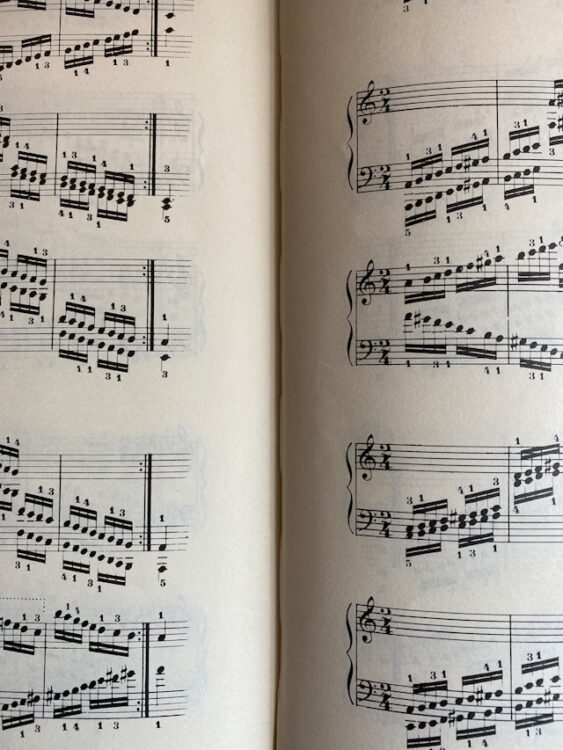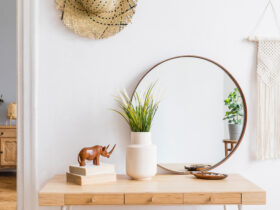Crafting an effective warm-up routine is essential for pianists of all skill levels, whether you’re just starting or have been playing for years. Hand conditioning through dedicated piano finger exercises is a vital component of this routine. These routines prepare your hands for peak performance and serve as essential components in both injury prevention and technique refinement. These exercises prepare for a productive session, help prevent injuries, and improve overall technique. This blog will explore the importance of mastering proper techniques, introduce various practical warm-up exercises, and offer valuable insights on seamlessly integrating them into your daily practice routine.
Hand Conditioning
Hand conditioning for pianists is akin to athletes warming up before a game. It’s about preparing the muscles, tendons, and joints for the activity ahead. For pianists, this means readying the hands and fingers for intricate movements and prolonged practice sessions. Proper conditioning can enhance agility, speed, and precision while significantly reducing strain and injury risk. Regularly incorporating these exercises into your practice ensures that your hands remain strong, flexible, and capable of executing complex musical passages.
Warm-Up Exercises: The Foundation of Effective Practice
Finger Stretching
To kickstart your practice session effectively, consider incorporating simple piano finger exercises to limber up your hands. Start with gentle finger stretching routines aimed at enhancing flexibility and priming your fingers for the intricate movements demanded during piano play. Begin by spreading your fingers wide apart, gradually bringing them together, and holding each stretch for a few seconds. These sessions not only help alleviate any stiffness but also ensure that your fingers are adequately prepared for the dexterity needed during your practice session.
Scales and Arpeggios
Scales and arpeggios are not just technical exercises but fundamental components of hand conditioning. Playing scales and arpeggios slowly and methodically warms up each finger, builds muscle memory, and improves finger independence and coordination. Start with simple major and minor scales, gradually increasing the tempo as your fingers become more agile.

Hanon
Starting with the first exercises, focus on evenness and control, gradually increasing speed as your hands warm up. Keep in mind that your objective isn’t solely about velocity; it encompasses achieving accuracy and seamless execution as well.
Czerny
Carl Czerny’s exercises are another excellent resource for warming up and improving technique. These are particularly effective in developing talent and coordination between the hands. Start with simple movements, focusing on articulation and evenness, and gradually tackle more complex ones.
Wrist Flexibility Exercises
Wrist flexibility is vital for piano players. Rotate your wrists in circular motions, first clockwise and then counterclockwise. Flex your wrist up and down, then side to side, ensuring you move through the full range of motion. These movements help prevent stiffness and improve mobility.
Strengthening Exercises
In addition to flexibility, strength is crucial for enduring long practice sessions and performing challenging pieces. These exercises should be performed after the initial warm-up phase.
Hand Grippers
Using a hand gripper can significantly improve strength. Start with a low resistance and gradually increase as your strength improves. Ensure you perform this exercise with both hands to maintain balance.
Thumb Opposition Exercises
The thumb plays a pivotal role in piano playing, providing stability and control. Practice thumb opposition exercises by touching the tip of your thumb to each fingertip in turn, then stretching the thumb back to its starting position. This exercise enhances thumb mobility and strength.
Octave Practice
Practicing octaves is an excellent way to build strength. Start slowly, focusing on precision and control. As your strength improves, increase the speed and intensity. Ensure you use the proper technique to avoid strain.

Integrating Them into Your Daily Practice
Consistency is Key
Incorporate a set of warm-up movements at the beginning of every practice session. Consistency helps build muscle memory and conditioning the hands over time. A consistent routine ensures you are always prepared to tackle piano-playing demands. Consistency in your warm-up routine can significantly impact your overall performance and progress. By dedicating the first few minutes of your practice to conditioning, you’re setting a solid foundation for a productive session.
Listen to Your Body
As important as it is to push your boundaries, listening to your body is equally crucial. If you feel pain or discomfort, take a break or adjust your approach. Warm-up movements should prepare your hands, not strain them. Remember, the aim is to elevate your performance, not impede it. By paying close attention to how your body responds to different exercises, you can tailor your routine to suit your needs and limitations better. After all, the goal is to enhance your performance and enjoy playing music, not to slow down the progress with preventable injuries.
Relaxation Techniques
Practising relaxation techniques can be a valuable part of your cool-down routine. Embracing techniques like deep breathing or mindfulness can effectively alleviate both the physical tension and mental strain accumulated throughout your practice sessions. Sitting quietly at the piano, take deep breaths, and focus on relaxing each part of your hands and arms. Integrating relaxation techniques into your regimen fosters a harmonious equilibrium between intense practice sessions and essential rest, enhancing both the longevity and pleasure of your musical pursuits.
Setting Realistic Goals
Integrating these practical exercises into your daily practice routine starts with setting realistic, achievable goals. Whether you’re a beginner looking to build foundational strength and flexibility or an advanced player focusing on maintaining endurance and dexterity, your goals should reflect your current level and aspirations. Begin by identifying specific areas you wish to improve, such as increasing finger speed, enhancing coordination between hands, or building stamina for longer practice sessions. Establishing short-term milestones as part of your routine offers a powerful way to stay inspired and track your advancement.
Creating a Balanced Routine
To effectively integrate these exercises into your daily piano practice, it’s essential to create a balanced routine that addresses both technical skills and musicality. Start your practice session with a series of warm-up activities designed to prepare your hands and fingers for the demands of playing. This might include a mix of stretches, finger independence exercises, and strength-building activities tailored to your specific needs. After warming up, transition to technical exercises, such as scales, arpeggios, or Hanon ones, which further reinforce the conditioning work while also focusing on musical elements like timing and articulation. Finally, apply the improved physical capabilities to your repertoire practice, noticing how the conditioning activities enhance your ability to express the music.
Conclusion
Effective hand conditioning through warm-up exercises, such as piano finger exercises, is indispensable for pianists of all levels. It prepares them for the demands of practice and performance, prevents injuries, and contributes to technical improvement. By understanding the importance of exploring effective movements and integrating these into your daily routine, you can enhance your piano practice and enjoy a fruitful musical journey.














Leave a Reply